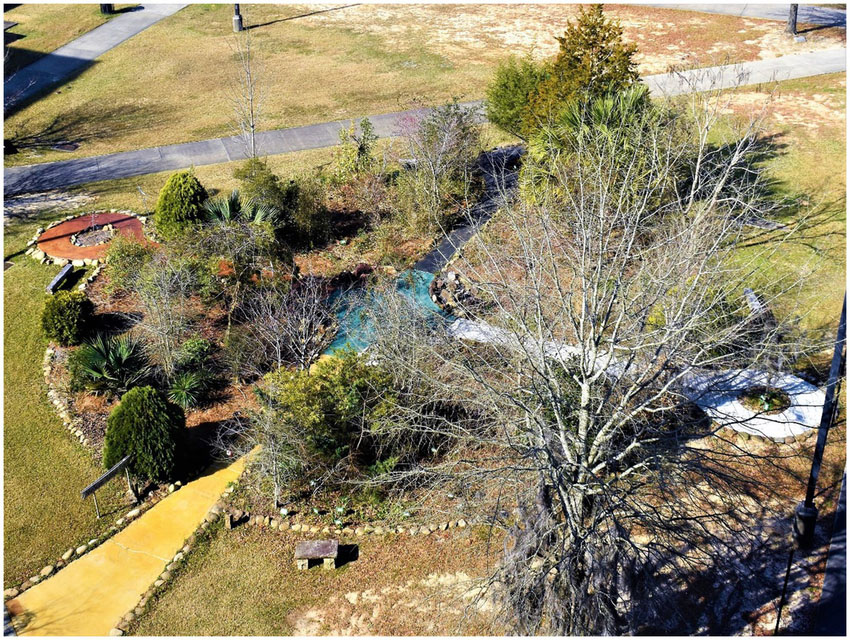Medicine Wheel Garden Provides Education and inspiration for the Southern Miss Community
Thu, 09/05/2024 - 11:02am | By: Dr. Sean Buckelew

Built during the Summer of 2005, the University of Southern Mississippi (USM) Medicine Wheel Garden is a source of education and inspiration for the USM community and beyond. Located behind the International Building on the Hattiesburg campus, this four-direction garden includes plants historically used by Southeastern Native populations and honors the rich history of our state and the entire region. This cultural landmark has recently garnered attention in several publications, including Country Roads Magazine, Mississippi Folklife, and Frontiers in Public Health. These articles explore the origins, purposes, and importance of the Medicine Wheel, emphasizing Indigenous holistic teachings on becoming a fully engaged human being while maintaining balance in our busy world.
In her article for Mississippi Folk Life titled Making a Space for the Four Directions: Growing the Southern Miss Medicine Wheel Garden, Dr. Tammy Greer, in the School of Psychology, traces the roots of the Medicine Wheel Garden from the seed of an idea to the blossoming of a cultural and spiritual garden. Dr. Greer, who originated the idea for the garden based on conversations she had with Indigenous elders, shares her personal experience of bringing the garden to life to strengthen a bond with nature while invigorating connections to the past. She notes that the garden has inspired community, as its creation and ongoing growth involve collaboration between various groups, including faculty, students, and community members. It has also become a space for educational programs and cultural events, fostering a sense of shared responsibility and understanding.
In the August edition of Country Roads Magazine, writer Mimi Greenwood Knight further explores the creation and purpose of the Medicine Wheel in her article Come Full Circle. Knight expounds on the Medicine Wheel’s deep meaning to both its creators and the visitors who experience its beauty daily. Funded by a small grant and constructed on a barren plot of land, Knight follows the garden’s growth into one bursting with life, thanks to Dr. Tammy Greer’s guidance and community members’ contributions. Knight also brings attention to the deeper meaning behind its four-path design, the key role these plants played for native communities, and how it symbolizes the importance of balance for all of us.
Frontiers in Public Health published an article by Dr. Tammy Greer and Dr. Jennifer L. Lemacks from the College of Nursing and Health Professions (CNHP) titled The Medicine Wheel as a Public Health Approach to Lifestyle Management Intervention for Indigenous Populations in North America in their July issue. In their article, Drs. Greer and Lemacks argue that the Medicine Wheel, as a symbol of balance and connectedness, can be a useful framework to help improve the health of Indigenous communities as interventionists build on the Western focus on mental and physical by increasing the focus on the often-overlooked spiritual and social aspects of health. In this way, Medicine Wheel teachings become an Indigenous inspired path toward a future of health that Indigenous ancestors have laid out.
As the Southern Miss Medicine Wheel Garden reaches the age of twenty, it remains vital to the University’s drive toward “educating citizens in a pluralistic society,” honoring the native plants and the Native people who make up our history. We hope that this garden continues to be a source of inspiration and life-long learning, as, in the words of Dr. Greer, “These plants carry lessons that we need in this world. We wanted a garden filled with these plants, full of lessons.”